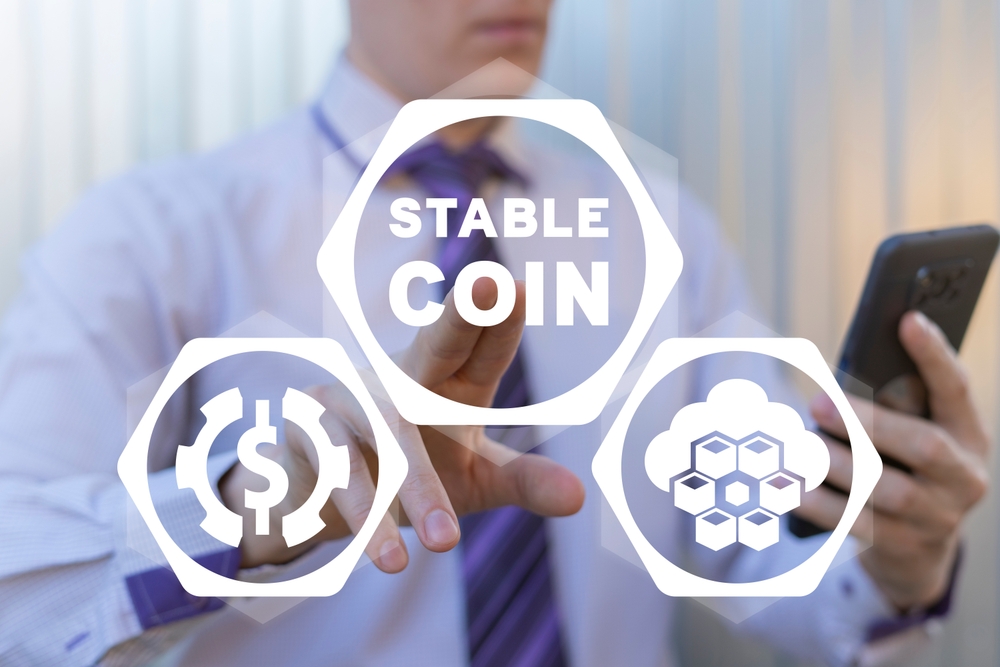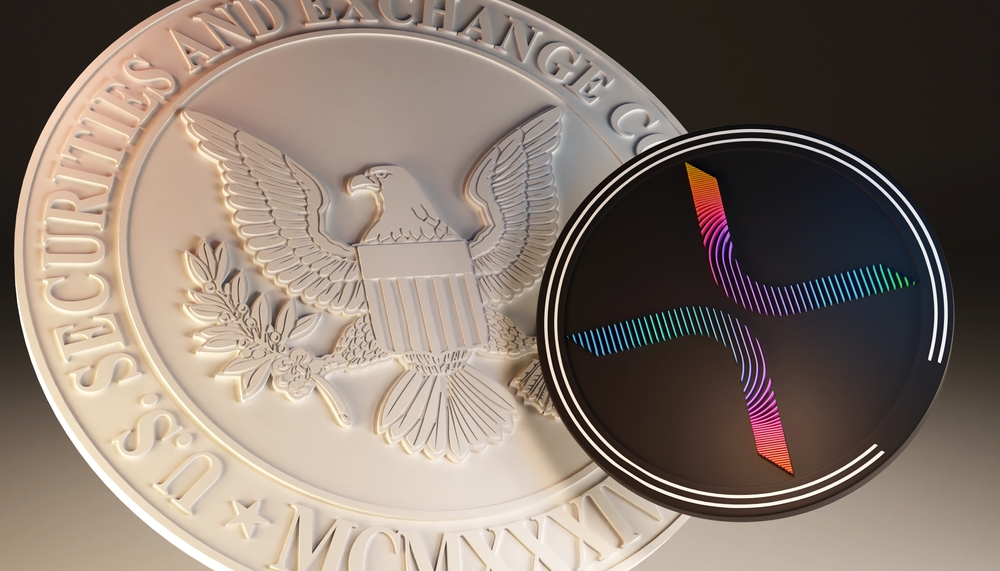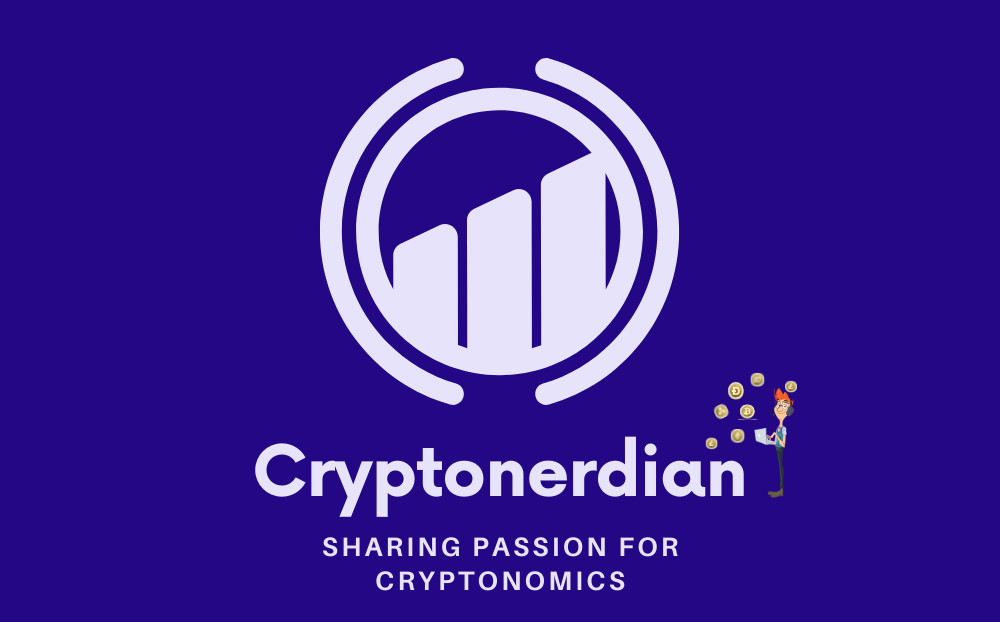Blockchain technology has rapidly evolved, but its potential is still limited by the lack of interoperability. Blockchain interoperability allows different blockchain networks to communicate and share data seamlessly, expanding the scope and capabilities of each individual network. This interoperability is crucial for creating a more connected and efficient digital ecosystem.

Interoperable blockchains enable various platforms to work together, allowing for smoother transactions, enhanced security, and broader applications. By making it possible to transfer tokens and data across multiple chains, interoperability supports the development of decentralized applications (Dapps) and smart contracts that can operate beyond one specific blockchain. This capability can lead to more robust and scalable financial systems and services.
Projects focused on interoperability are paving the way for innovative solutions across diverse sectors. From finance to supply chain management, and healthcare to government systems, the ability to exchange information securely and efficiently is transformative. Implementing interoperability involves mechanisms like cross-chain token transfers and the use of oracles and relays to ensure secure communication between networks.
Table of Contents
ToggleKey Takeaways
- Blockchain interoperability enhances data and token transfer between networks.
- It enables the development of versatile decentralized applications and smart contracts.
- Diverse industries benefit from secure and efficient information exchange.
Understanding Blockchain Interoperability

Blockchain interoperability is crucial as it allows different blockchains to communicate and share data effectively. This leads to improved efficiency and broader applications across various digital ecosystems.
The Importance of Interoperability
Blockchain interoperability enables multiple blockchains to connect and exchange information. This solves the problem of isolated blockchain networks that cannot interact with each other.
Interoperability makes it easier to transfer assets and data securely across different blockchains, promoting flexibility and innovation. This is especially important for applications like decentralized finance (DeFi) and supply chain management.
Interoperability also helps reduce transaction costs and increases the speed of cross-chain transactions. With interconnected blockchains, users can access a wider range of services and benefits, leading to a more vibrant blockchain ecosystem.
Key Concepts and Definitions
Blockchain interoperability refers to the ability of different blockchain networks to interact and exchange data seamlessly. This is achieved through inter-blockchain communication protocols and standards.
Cross-chain is a term used to describe transactions that span multiple blockchain networks. These transactions require mechanisms to ensure data consistency and security across all participating networks.
An atomic cross-chain transaction is one where the transaction is either fully completed or not at all. This ensures no half-finished transactions, reducing the risk of errors.
Interoperability protocols are the rules and standards that enable different blockchains to communicate. Examples include Cosmos and Polkadot, which focus on creating a network of interoperable blockchains.
By understanding these concepts, stakeholders can better grasp how interoperability enhances blockchain networks’ functionality and potential.
Interoperability Mechanisms

Blockchain interoperability is made possible through various mechanisms such as standardized protocols, cross-chain technologies, and atomic swaps. These elements enable different blockchain networks to communicate and transfer assets securely and efficiently.
Protocols and Standards
Protocols and standards are essential for ensuring consistent communication between distinct blockchain networks. They define the rules and data formats to be followed across systems. Interledger Protocol (ILP) is an example that facilitates transactions between multiple ledgers. Hyperledger Fabric also supports various plug-and-play components for interoperability, providing tools such as Hyperledger Quilt.
By setting common ground rules, protocols and standards minimize errors and conflicts. Without these guidelines, cross-chain operations could face significant issues, leading to operational inefficiencies and security risks. Consensus mechanisms like Proof of Stake (PoS) and Proof of Work (PoW) benefit greatly from standardized protocols.
Cross-Chain Technology
Cross-chain technology enables the exchange of data and assets between different blockchain networks. Polkadot and Cosmos are prominent examples of platforms utilizing relay chains for cross-chain interactions. These relay chains act as intermediaries, ensuring that data is correctly processed and verified across participating chains.
One major benefit of cross-chain technology is scalability. By allowing multiple blockchains to interoperate, it prevents congestion and speeds up transaction processing. Another advantage is enhanced flexibility, as users can leverage the strengths of different blockchains. For instance, a blockchain specialized in privacy can interact with another focused on high-speed transactions, offering a comprehensive solution.
Atomic Swaps
Atomic swaps are a method for instantly exchanging cryptocurrencies between different blockchains without needing an intermediary. These swaps use smart contracts to ensure both parties fulfill the terms of the trade simultaneously. If any condition is not met, the transaction is void, maintaining a high level of security.
Atomic swaps operate based on Hash Time-Locked Contracts (HTLCs), which manage the transactional timelines and cryptographic locks. This mechanism reduces reliance on centralized exchanges, lowering the risk of fraud. Furthermore, atomic cross-chain swaps enhance liquidity by enabling seamless transfers between multiple cryptocurrencies, thereby fostering a more integrated ecosystem.
Blockchain Interoperability Projects

Understanding blockchain interoperability projects helps explain how different blockchain networks can communicate and work together. These initiatives aim to connect various blockchains, enabling seamless data transfer and cross-chain transactions.
Cosmos Network
Cosmos Network focuses on creating an Internet of Blockchains. It helps diverse blockchains communicate using a system called Tendermint Core for consensus. Cosmos uses Inter-Blockchain Communication (IBC) for data exchange between connected networks.
Cosmos aims to improve scalability and usability through its Hub-and-Zone architecture. The Cosmos Hub acts as the main blockchain, while other blockchains, called Zones, connect to it. Developers can build smart contracts and decentralized apps (dApps) easily on Zones.
The Cosmos SDK provides a framework to build custom blockchains. It allows developers to focus on application-specific logic without worrying about the underlying consensus protocol. Integration is seamless due to its modular architecture, ensuring high performance and security.
Polkadot
Polkadot is designed to enable different blockchains, known as parachains, to interact in a unified network. The Relay Chain is the core of Polkadot, maintaining network security and facilitating communication between parachains.
Polkadot aims for high scalability through parallel processing. Each parachain can have its unique design, optimized for specific tasks or applications. This feature helps in handling multiple transactions simultaneously without network congestion.
Substrate, Polkadot’s blockchain development framework, simplifies building new blockchains. It provides customizability, allowing developers to create features tailored to specific needs. The focus on interoperability ensures that various parachains and external blockchains can exchange information efficiently and securely.
Wanchain
Wanchain facilitates interoperability between public, private, and consortium blockchains. It uses cross-chain smart contracts to link different networks, enabling asset and data transfers. The goal is to build a distributed financial infrastructure.
Wanchain employs secure multi-party computation (sMPC) and threshold key sharing for transaction verification across chains. This method ensures privacy and security during cross-chain interactions.
The Wanchain Bridge connects different blockchains, allowing assets to move seamlessly across networks. It supports the integration of many blockchain platforms, enhancing the utility of digital assets. Developers can build interoperable dApps using Wanchain’s blockchain infrastructure, benefiting from its robust cross-chain capabilities.
Interoperable Smart Contracts and Dapps

Interoperable smart contracts enable different blockchain systems to work together. Decentralized applications (dApps), powered by these smart contracts, can run seamlessly across multiple blockchains.
Smart Contract Design
Smart contracts are self-executing contracts with the terms of the agreement directly written into code. For interoperability, these contracts must be designed to function on various blockchain platforms like Ethereum, Hyperledger Fabric, and Tendermint.
Interoperable smart contracts often use standard protocols, such as ERC-20 on Ethereum, to ensure compatibility. These standards allow contracts to interact with different blockchains without needing significant changes.
Key features:
- Portability: Code that runs on multiple blockchains.
- Security: Ensuring no vulnerabilities when interacting across networks.
- Standardization: Using protocols like ERC-20 for wide acceptance.
Interoperable smart contracts can enhance blockchain networks’ functionality by allowing data and value transfer without intermediaries. This design is crucial for the practical implementation of decentralized finance (DeFi) and cross-chain applications.
Decentralized Applications (Dapps)
Decentralized applications, or dApps, use smart contracts to perform various tasks without central authority. When built using interoperable smart contracts, dApps can operate across multiple blockchain platforms like Ethereum, Tendermint, and Hyperledger Fabric.
Advantages:
- Flexibility: Operate across different blockchains.
- Scalability: Handle higher transaction volumes by leveraging multiple networks.
- Resilience: Reduce the risk of network-specific issues.
For instance, a dApp that manages supply chain logistics can trace goods across numerous platforms. The use of oracles can help these dApps gather external data, ensuring accurate execution across different blockchains.
Interoperable dApps are pivotal in achieving a truly decentralized ecosystem. They allow blockchain networks to leverage each other’s strengths and help foster innovation in decentralized technologies.
Building Financial Ecosystems

Building financial ecosystems involves integrating various mechanisms to facilitate seamless asset transfers and interoperability among blockchain networks. This section explores how cryptocurrency swaps and token exchanges play a crucial role.
Cryptocurrency Swaps
Cryptocurrency swaps allow users to exchange one digital asset for another directly. These swaps can occur through decentralized platforms or specialized swap services. The primary advantage is that it eliminates the need for an intermediary, reducing costs and increasing transaction speed. For example, through a trusted decentralized exchange, a user can convert Bitcoin into Ethereum in just a few clicks.
These swaps support interoperability by enabling transactions across different blockchain environments. Users can take advantage of liquidity across various platforms, which is crucial for maintaining a diverse portfolio. Additionally, automated swap functions, often powered by smart contracts, ensure secure and transparent transactions.
Token Exchanges
Token exchanges are platforms where users can buy, sell, or trade tokens. These can include utility tokens, security tokens, or any digital asset representing value. Major exchanges like Binance and Coinbase offer extensive services to facilitate these trades. Exchanges support various pairs, like ETH/BTC or USDT/LTC, providing users with a wide range of trading options.
The importance of token exchanges lies in their ability to provide liquidity and market access. They help price discovery and allow users to participate in different financial products. Security measures like two-factor authentication and cold storage enhance trustworthiness. Moreover, some exchanges are integrated with traditional financial systems, enabling easier fiat-to-token and token-to-fiat conversions.
Both cryptocurrency swaps and token exchanges are vital components of a robust and interoperable blockchain-based financial ecosystem. They ensure users can easily manage and diversify their digital assets across different platforms.
Scaling and Enhancing Blockchains

Blockchain systems face challenges related to scalability and efficiency. Key methods for addressing these issues include the use of sidechains and various sharding techniques, both of which aim to improve transaction processing and network capacities.
Sidechains and Layer Solutions
Sidechains are separate blockchain networks that run parallel to primary blockchains, known as layer-1 blockchains. These sidechains are pegged to the main network, allowing assets to be transferred between the two chains seamlessly. This mechanism helps to offload transactions from the main chain, significantly improving scalability. Sidechains also enable the development and testing of new features without disrupting the main network. Popular examples include the Liquid Network and the RSK sidechain, which enhance Bitcoin’s capabilities.
Layer solutions, particularly layer-2 solutions, build on top of the main blockchain to handle transactions off-chain before finalizing them on-chain. This reduces congestion and increases throughput. Notable implementations include the Lightning Network for Bitcoin and Plasma for Ethereum. These solutions are crucial for networks aiming to support large-scale, real-time transactions, and microtransactions efficiently.
Sharding Techniques
Sharding involves dividing a blockchain’s entire network into smaller, manageable pieces called shards. Each shard processes its own transactions and smart contracts independently, which spreads the processing load across the network. This method substantially increases a blockchain’s capacity to process transactions in parallel, thus enhancing scalability.
Ethereum’s move towards sharding with its Ethereum 2.0 upgrade aims to distribute data processing across 64 shards. This approach differs from traditional single-chain models, where every node verifies all transactions, creating bottlenecks. Sharding not only improves throughput but also reduces latency and enhances the overall user experience by allowing the network to handle more users and transactions simultaneously without compromising security.
These advancements ensure that blockchain networks can meet growing demands while maintaining security and decentralization.
Interoperability in Diverse Industries

Blockchain interoperability holds immense potential to reshape various sectors by enabling seamless data exchange and collaboration across different blockchain platforms. This section explores how this technology can revolutionize supply chain management, healthcare, and finance and real estate.
Supply Chain
In the supply chain industry, blockchain interoperability can significantly enhance transparency and traceability. Companies can track the movement of goods across different stages of production and distribution. This helps in avoiding fraud and ensuring that products are authentic.
Interoperable blockchains allow different stakeholders, from suppliers to retailers, to access and share relevant data securely. This real-time data sharing improves decision-making and efficiency. For example, a manufacturer could verify the origin of raw materials and ensure quality standards are met throughout the production process.
By utilizing blockchain interoperability, supply chains can also respond faster to disruptions. This is especially crucial in industries like food and pharmaceuticals, where timely and accurate information can prevent serious consequences.
Healthcare
In healthcare, blockchain interoperability can address the critical challenge of data silos. Patient information is often fragmented across multiple systems, making it difficult for healthcare providers to access comprehensive patient records.
With interoperable blockchain systems, patient data can be seamlessly shared among different healthcare providers. This ensures that medical histories, treatments, and diagnoses are accurately and quickly accessible. It enhances the quality of care and reduces the risk of errors.
Additionally, blockchain interoperability can streamline administrative processes, such as insurance claims and patient billing. It provides a secure and efficient way to manage sensitive patient information, thus improving the overall efficiency of healthcare services.
Finance and Real Estate
In the finance sector, blockchain interoperability can facilitate cross-border transactions and increase financial inclusion. Different financial institutions can interact on a shared platform, reducing the complexity and cost of international payments.
For real estate, interoperability can simplify property transactions. It ensures that data related to property ownership, mortgage details, and transaction history is available on a transparent and immutable ledger. This reduces the risk of fraud and speeds up the buying and selling process.
Moreover, blockchain interoperability can help streamline the processes of financing and investing in properties. It promotes greater trust and transparency among buyers, sellers, and investors, which is essential for a robust real estate market.
The Role of Oracles and Relays

Oracles and relays play critical roles in enabling communication between different blockchains. They help transfer data and verify transactions, ensuring seamless interoperability without compromising the security of the connected networks.
Decentralized Oracles
Decentralized oracles are systems that provide data to blockchains in a trustless manner. Chainlink is a well-known example of a decentralized oracle service. It aggregates data from multiple sources to ensure accuracy and reliability. This is crucial for executing smart contracts that depend on external information, like weather data or stock prices.
Oracles use a voting-based method to reach a consensus on the data provided, reducing the risk of tampering. They are also helpful for dealing with real-world inputs, enabling blockchain applications to interact with existing systems and databases. By using multiple data sources, they enhance the security and reliability of the data fed into blockchain networks.
Decentralized oracles are attractive because they minimize single points of failure and reduce trust in a single entity. They are becoming essential for complex blockchain applications that require interaction with external and off-chain data sources.
Blockchain Relays
Blockchain relays act as intermediaries that facilitate communication between different blockchain networks. BTC Relayis a prominent example, allowing Ethereum smart contracts to verify Bitcoin transactions. This relay stores Bitcoin block headers, creating a mini, simplified version of the Bitcoin blockchain on Ethereum.
Relays can be utilized to verify transactions from one blockchain on another without the need for additional trust. For instance, relays can monitor and confirm cross-chain transactions, making them highly useful in decentralized finance (DeFi) applications.
The POA Network leverages relays to enable faster and cheaper transactions across various blockchains. These relays maintain the integrity and validation processes to ensure that only legitimate transactions are mirrored.
Blockchain relays are pivotal for achieving higher levels of interoperability, allowing seamless asset transfer and data sharing between diverse blockchain ecosystems.
Security and Standardization

Security and standardization are integral to blockchain interoperability. They ensure that different blockchain systems can communicate reliably and safely. This requires addressing verifiability, security concerns, and the development of interoperability standards.
Verifiability and Security Concerns
Verifiability ensures that transactions and data exchanges across blockchain platforms are correct and trustworthy. Systems implementing blockchain interoperability often use strong cryptographic methods to secure data. These methods help prevent unauthorized access and tampering.
Security concerns can arise from vulnerabilities in the cross-chain protocol. Ensuring the safety of data as it moves between different blockchains is crucial. Middleware solutions can help by providing additional layers of security, verifying data integrity, and ensuring that only authenticated transactions are passed through.
Another concern is the risk of double-spending or fraud, which must be minimized through rigorous consensus mechanisms. Blockchain’s decentralization aspect offers some security, but it is critical to maintain high standards to prevent exploitation.
Developing Interoperability Standards
Interoperability standards are necessary for seamless communication between different blockchain networks. These standards define how data is formatted, transmitted, and processed. Common standards like FHIR for healthcare or specific blockchain protocols can help improve compatibility.
Cross-chain protocols enable blockchains to interact without compromising the unique properties of each network. These protocols often form the backbone of interoperability solutions. Effective standards need to be widely adopted to foster a cohesive ecosystem.
Middleware solutions play a vital role by acting as intermediaries that translate and route information between diverse systems. Middleware can also enforce compliance with interoperability standards, helping streamline the integration process and ensure consistency across different platforms.
These standards not only facilitate current operations but also pave the way for future advancements in blockchain technology.
Future Directions for Blockchain Interoperability
Key areas to focus on include further research and development and increased public adoption to realize full blockchain interoperability potential.
Research and Development
Future research directions will play a crucial role in enhancing blockchain interoperability. Researchers are looking into better public connectors and hybrid connectors. These connectors help link different blockchains together seamlessly. A comprehensive blockchain interoperability framework would standardize how these connections work, making them more reliable and easier to use.
Hybrid connectors, which combine public and private blockchain advantages, are another area of intense scrutiny. They aim to balance security, speed, and privacy. The industry is also focusing on automated solution discovery for interoperability issues, which could significantly cut down on the time and complexity of integrating different systems.
Innovation and Public Adoption
Public adoption is vital for the success of interoperability solutions. Increased interest from businesses and individuals can drive innovation. Developing user-friendly applications is crucial. These applications should make it easy to interact with multiple blockchains without needing deep technical knowledge.
Promotion and education are also important. Public connectors, which facilitate secure and straightforward connections for users, can help spur greater engagement. Achieving widespread adoption requires continuous innovation to address the different needs and concerns of users. Simplifying the complex processes and ensuring security can help gain public trust and boost adoption rates.
For a deeper dive into these topics, studies such as those from ACM Digital Library and Springer provide valuable insights.
Frequently Asked Questions
Blockchain interoperability is a crucial aspect of modern blockchain networks. It enables different blockchains to communicate and share data efficiently, enhancing the overall utility of the technology. Here are some common questions about this topic.
How do different blockchain networks achieve interoperability?
Different blockchain networks achieve interoperability through various methods such as atomic swaps, relay chains, and cross-chain bridges. These mechanisms allow blockchains to exchange information and assets securely and efficiently.
Can you provide examples of successful blockchain interoperability implementations?
Some successful examples of blockchain interoperability include the integration between Bitcoin and Ethereum through atomic swaps, and the use of Polkadot’s relay chain to connect multiple blockchains. These implementations demonstrate practical solutions for cross-chain communication.
What are the most significant challenges in achieving blockchain interoperability?
Achieving blockchain interoperability faces several challenges, including technical complexity, security risks, and the lack of universal standards. These obstacles can hinder the seamless exchange of information between different blockchain networks.
What role do interoperability-focused companies play in the blockchain ecosystem?
Interoperability-focused companies, like Chainlink and Polkadot, play a vital role by developing technologies and frameworks that facilitate cross-chain communication. They help to provide bridges and protocols that enhance the functionality and reach of blockchain networks.
How does Ethereum approach interoperability with other blockchains?
Ethereum approaches interoperability through various methods, including the use of sidechains and bridges like Polygon. These solutions enable Ethereum to interact with other blockchains, enhancing its capabilities and application range.
What are the potential impacts of blockchain interoperability on market growth?
Blockchain interoperability has the potential to significantly boost market growth by enabling seamless transactions and data sharing between different networks. This can lead to enhanced efficiency, increased adoption of blockchain technology, and the creation of new business opportunities.












